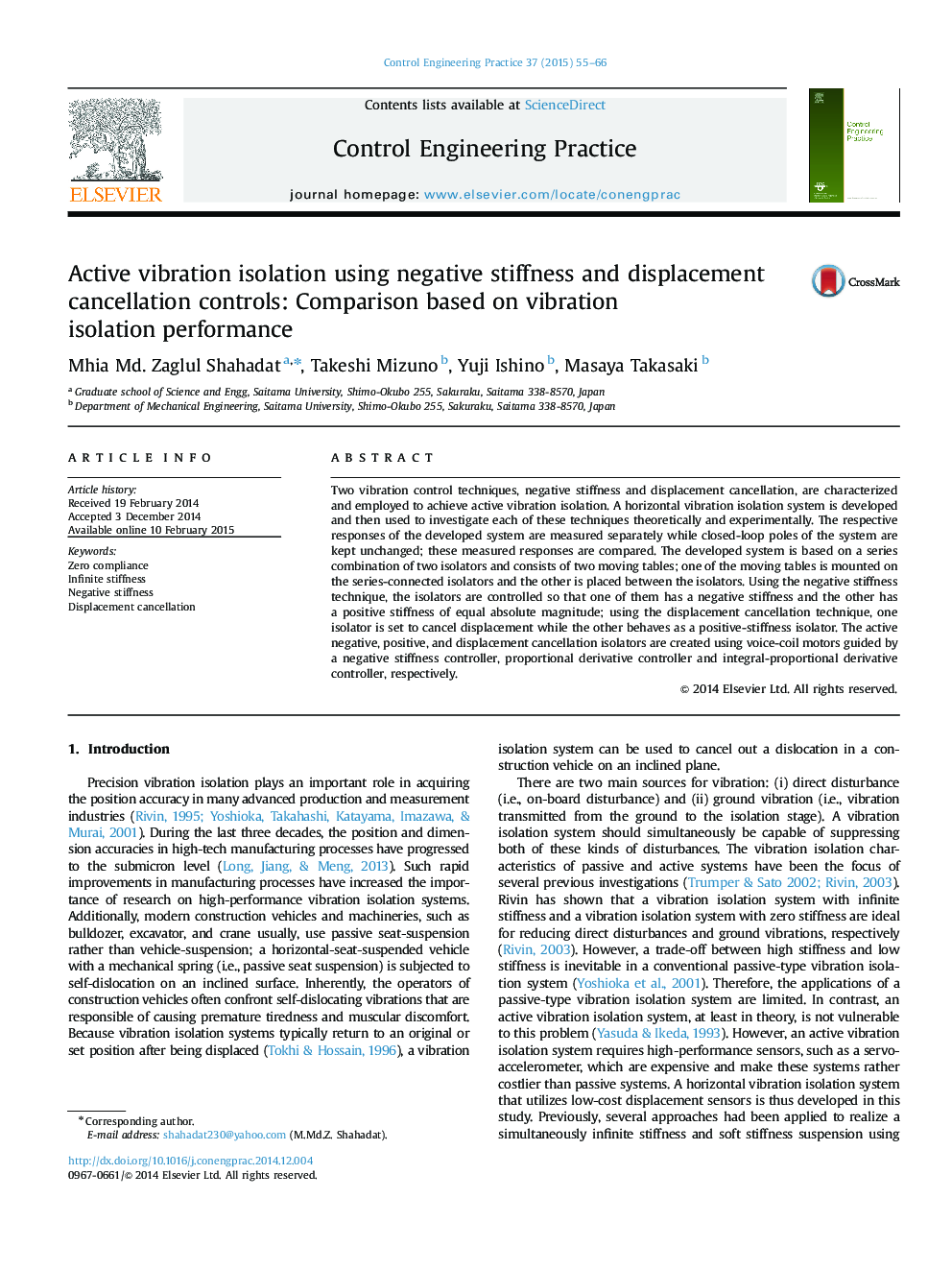| Article ID | Journal | Published Year | Pages | File Type |
|---|---|---|---|---|
| 699483 | Control Engineering Practice | 2015 | 12 Pages |
Two vibration control techniques, negative stiffness and displacement cancellation, are characterized and employed to achieve active vibration isolation. A horizontal vibration isolation system is developed and then used to investigate each of these techniques theoretically and experimentally. The respective responses of the developed system are measured separately while closed-loop poles of the system are kept unchanged; these measured responses are compared. The developed system is based on a series combination of two isolators and consists of two moving tables; one of the moving tables is mounted on the series-connected isolators and the other is placed between the isolators. Using the negative stiffness technique, the isolators are controlled so that one of them has a negative stiffness and the other has a positive stiffness of equal absolute magnitude; using the displacement cancellation technique, one isolator is set to cancel displacement while the other behaves as a positive-stiffness isolator. The active negative, positive, and displacement cancellation isolators are created using voice-coil motors guided by a negative stiffness controller, proportional derivative controller and integral-proportional derivative controller, respectively.
